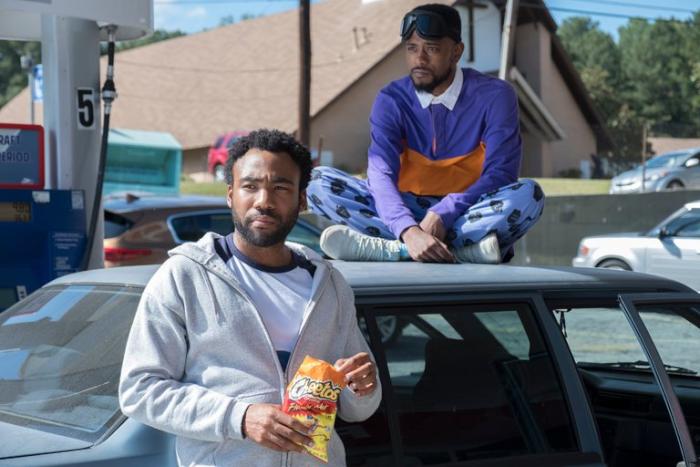The ‘Atlanta,’ ‘Barry,’ and ‘This is America’ director has cultivated an impressive, distinct filmmaking voice.
There are countless metrics that can be employed to judge the quality of whatever you like to watch: novelty, technical quality, satisfaction or joy, relatability, binge-ability, broadness, specificity, context in history, politics, and filmography… the list goes on. Yet for me, none of those things are quite as memorable or unquantifiably awesome as that gut-punch feeling, a moment of pure breathless, speechless surprise. When that moment comes — if it comes — it’s less an emotion than an instance of frission; a sharp, inappropriate laugh, a teary tingle behind the nose, or maybe just a sudden shiver.
With less than a decade of IMDb credits to his name and not a single feature film among them, director Hiro Murai has already mastered the gut-punching, “what the fuck just happened?” moment, creating art that forces us to not only engage with our own discomfort, but also to (almost compulsively) rewind, replay, and fixate. With a strong, hypnotic visual voice that comes through in the television shows Barry, Legion, and most of all Atlanta, as well as in music videos for artists including Childish Gambino, Murai is nothing short of a small screen auteur in the making.

The Tokyo-born, LA-based filmmaker has listed everyone from David Lynch and Akira Kurosawa to the Coen brothers and Danny Boyle as erstwhile favorites, and his cocktail of bold, dark, and ambitious inspirations is clear in his work, yet never overshadows his own signature. Meanwhile, his infatuation with dreamlike experimentalism, immaculate technical aspects, and make-it-bleed aesthetics also bring to mind creative greats like Lynne Ramsay, David Fincher, and even Hitchcock. While many consider Donald Glover the genius responsible for Atlanta, Murai’s directorial touch has also been invaluable to its success, and throughout the course of Robbin’ Season, his name in the credits became an increasingly powerful motivator to tune in.
Murai’s work is nearly always absurdist and uncanny, often bringing to mind a dream that edges on nightmare territory. He trades in striking images, slowly creeping unease, and jarring, discordant tonal shifts that hit viewers on a near-primal level. Interestingly, and perhaps most notably, Murai puts intention and suspense in every onscreen motion. The first image of Atlanta’s pilot episode is a shoe stomping down on a car’s side mirror, a single-second shot that requires immediate attention and sets us on edge for the rest of the scene (and, if we’re smart, the entire series). Later in the opening scene, in the middle of a heated exchange, a character suddenly mentions having deja vu, then points out a stray dog with a white spot in its fur shaped like Texas. Then, after a disorienting switch to an aerial view, a gunshot rings out. One, two, punch. There’s no clear meaning behind any of it, which might be the point, but Murai’s hypnotic yet kinetic direction sinks its hooks into you nonetheless.
The post Hiro Murai Has Mastered the Art of the Gut Punch appeared first on Film School Rejects.

0 comments:
Post a Comment